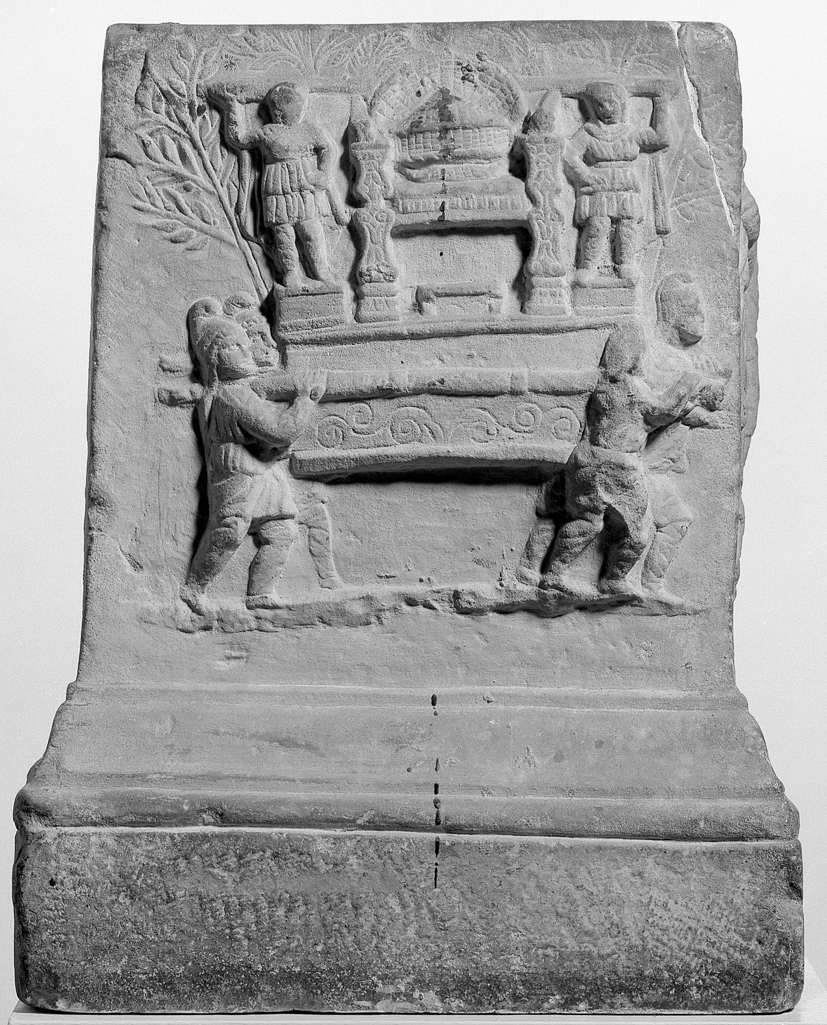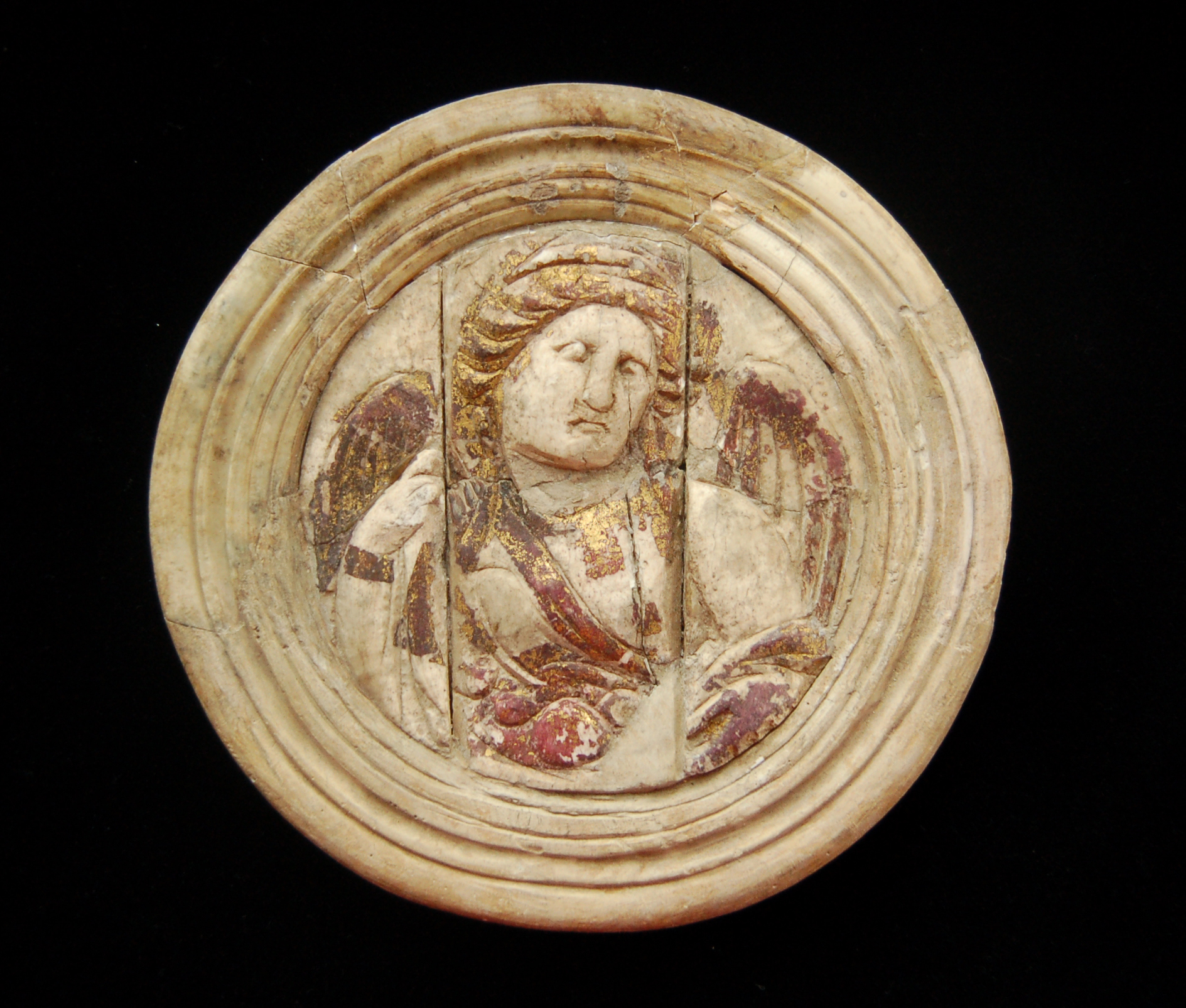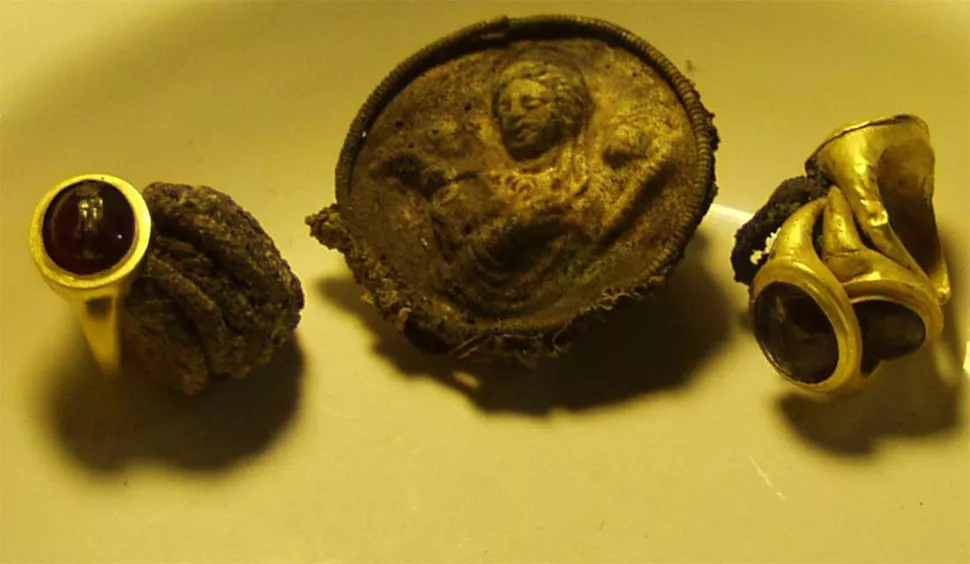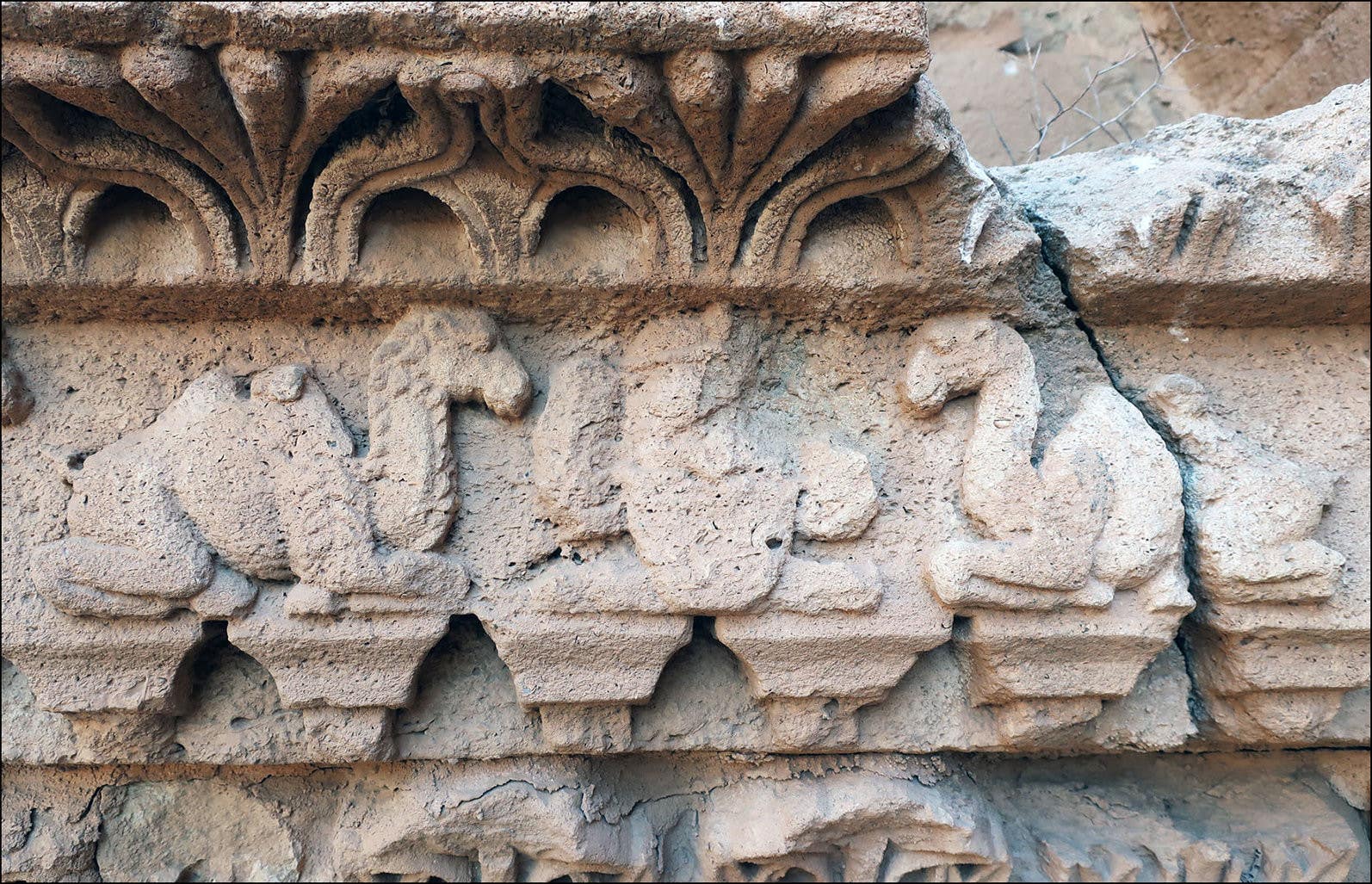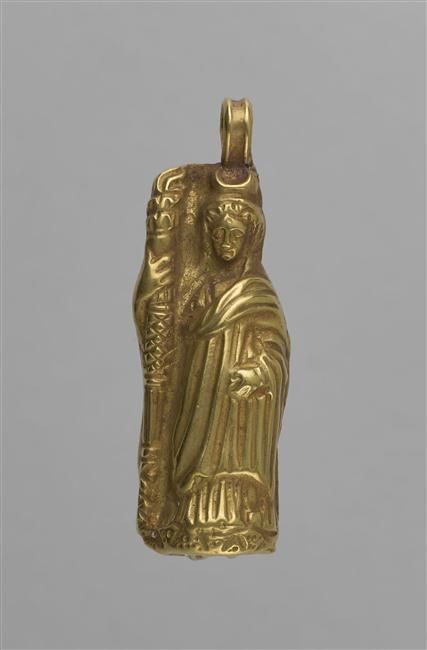
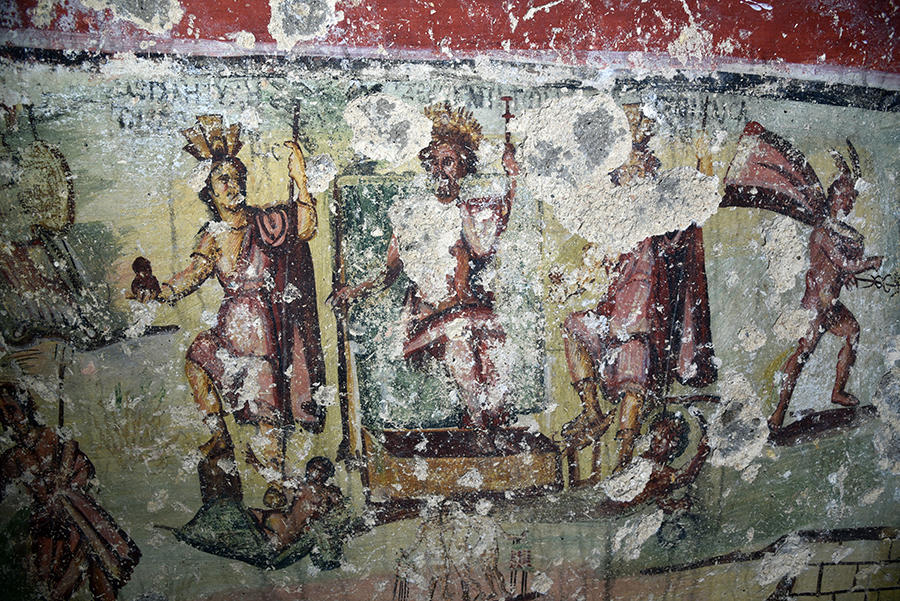
Photo © Julien ALIQUOT/ HiSoMA 2018
https://news.cnrs.fr/articles/an-iconographic-treasure-unearthed-in-jordan
“Modern-day Bayt Ras stands on the ruins of ancient Capitolias, one of the ten cities of the Decapolis League, founded by Pliny the Elder during the Hellenistic age. A Roman-era tomb was discovered at the site in late 2016, dating from the 1st to 5th centuries A.D. The tomb features 64 unique inscriptions in Greek and Aramaic, as well as dozens of frescoes that represent details of daily life that are not often mentioned in historical records. Consequently, the tomb is both visually beautiful and remarkably valuable for scholarly understanding of the region in this time period.
The tomb itself consists of two rooms carved into the limestone bedrock. In the larger main chamber, the ceiling reaches 2.5 m at its highest point, and a second, smaller room is connected via a small opening in the north wall. While the larger rectangular room features paintings and inscriptions on its walls, the smaller one is square and covered in plain plaster.” https://acorjordan.org/bayt-ras/
“This tomb, which consists of two funerary chambers and contains a very large basalt sarcophagus, is in an excellent state of conservation, even though it appears to have already been ‘visited.’ It is part of a necropolis located to the east of an imposing theater that was recently unearthed,” says with enthusiasm Julien Aliquot, one of the three researchers from the research unit Histoire et sources des mondes antiques (HiSoMA), which had investigated this hypogeum in the spring of 2017 and 2018, as part of two on-site surveys. “The tomb is located on the site of the ancient city of Capitolias, which was founded in the late first century CE, and was part of the Decapolis, a region that brought together Hellenized cities (provided with Greek-style institutions but belonging to the Roman Empire) in the southeastern area of the Near East, between Damascus and Amman.” https://news.cnrs.fr/articles/an-iconographic-treasure-unearthed-in-jordan

Photo © Julien ALIQUOT/ HiSoMA 2018
https://news.cnrs.fr/articles/an-iconographic-treasure-unearthed-in-jordan

Photo © Julien ALIQUOT/ HiSoMA 2018
https://news.cnrs.fr/articles/an-iconographic-treasure-unearthed-in-jordan
Many things are remarkable about this subterranean tomb of 52 m2. Let’s start with the impressive number of figures (nearly 260, including gods, humans, and animals) painted on the walls of the largest chamber. Of course other Roman tombs from the Decapolis also offer sumptuous mythological decor, but none of them can hold a candle to this one in terms of iconography. “These teeming figures compose a narrative that is arranged on either side of a central painting, which represents a sacrifice offered by an officiant to the tutelary deities of Capitolias and Caesarea Maritima, the provincial capital of Judaea,” says Aliquot.
No less original, to the right of the entrance, is a large painting illustrating the building of a rampart. “Characters resembling architects or foremen stand alongside laborers who are transporting materials on the backs of camels or donkeys, with stone cutters or masons climbing walls, sometimes resulting in accidents. This precise and picturesque scene of a construction site is followed by the last painting, in which a priest offers another sacrifice in honor of the city’s guardian deities,” explains Aliquot. Finally, displayed on the ceiling and walls on both sides of the entrance is a more classical composition evoking the Nile and the marine world, in which nymphs ride aquatic animals flanked by cupids, while a central medallion combines signs from the zodiac and the planets around a quadriga. https://news.cnrs.fr/articles/an-iconographic-treasure-unearthed-in-jordan
Whoever entered the tomb, before it was closed, first glimpsed on his left banqueting deities lying on beds, and tasting offerings brought by humans smaller than themselves. Again to the left of the entrance, a second painting with a country landscape shows peasants busy working the earth with the help of oxen, gathering fruit, tending grapevines… The next panel depicts woodcutters chopping down various species of trees with the help of gods, an exceedingly rare subject in Greco-Roman imagery.
- Rivka Gersht, 1984, The Tyche of Caesarea Maritima, Palestine Exploration Quarterly 116. Pp. 110-114
https://www.academia.edu/21756420/Rivka_Gersht_1984_The_Tyche_of_Caesarea_Maritima_Palestine_Exploration_Quarterly_116_Pp_110_114 - Anatomy of a Phoenician goddess: the Tyche of Berytus and her acolytes; Andreas J. M. Kropp
Published online by Cambridge University Press: 17 February 2015 https://doi.org/10.1017/S1047759400003433




